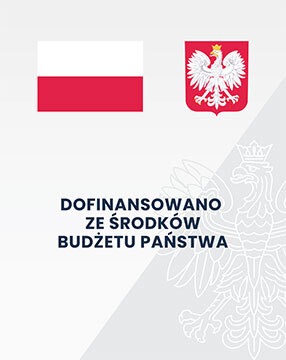Ewolucyjne i rewolucyjne procesy powstawania gatunków tekstów elektronicznych
Marek Nahotko
Afiliacja: Instytut Informacji Naukowej i Bibliotekoznawstwa, Uniwersytet Jagielloński , Polska
Abstrakt
Teza/cel artykułu – Przedstawiono opis procesów transformacji publikowania, w szczególności naukowego, z formy drukowanej do elektronicznej z zastosowaniem teorii gatunków tekstu. Mowa jest o gatunkach tekstów użytkowych (nieliterackich). Metody badań – Wykorzystano metodę analizy piśmiennictwa z obszaru genologii lingwistycznej oraz dyfuzji innowacji. Zmiany w strukturach mentalnych przedstawione zostały z użyciem techniki ram dynamicznych. Wyniki – Problem został przedstawiony z dwóch, kompatybilnych punktów widzenia. Po pierwsze, omówione zostały dostępne w literaturze modele ewolucji gatunków, wynikającej ze zmian technologicznych, prowadzących do upowszechnienia gatunków tekstu w formie elektronicznej (cybergatunków). Zmiany te uznane zostały za procesy innowacyjne w rozumieniu ekonomicznych teorii dyfuzji innowacji. Po drugie, ewolucja gatunków przedstawiona została od strony zmian w modelach mentalnych, tworzonych w umysłach ich użytkowników. Wnioski – We wszystkich teoriach wyróżnia się dwojakiego rodzaju zmiany gatunków tekstów: ewolucyjne i rewolucyjne, przy czym te ostatnie zwykle dotyczą zmian spowodowanych wprowadzaniem nowych technologii. Zmiany te mogą być rozpatrywane z punktu widzenia procesów tekstu, tekstu jako wyniku realizacji tych procesów lub reprezentacji mentalnych pojęć dotyczących tych procesów i gatunków tekstu.
Słowa kluczowe
Cyfryzacja publikowania naukowego; Gatunki tekstu; Dyfuzja innowacji; Ewolucja gatunków tekstu
Bibliografia
ACRL (2014). ACRL information literacy competency standards for Higher education task force. [online]. Framework for information literacy in higher education, draft 1. [dostęp: 25.05.2015]. Dostępny w WWW: <http://acrl.ala.org/ilstandards/wp-content/uploads/2014/02/Framework-for-IL-for-HE-Draft-1-Part-1.pdf>.
Åkesson, Maria; Ihlström, Carina; Svensson, Jesper (2004). Genre Structured Design Patterns– the case of online newspapers. In Proceedings of the 27th Information Systems Research Seminar in Scandinavia, Sweden. CD-ROM.
Andersen, Hanne; Barker, Peter; Chen, Xiang (2006). The cognitive structure of scientific revolutions. Cambridge: Cambridge Univ. Press.
Andersen, Jack (2008). The concept of genre in information studies. "Annual Review of Information Science & Technology", vol. 42, pp. 1-42.
Anderson, Richard (1977). Schema-directed process in language comprehension. Urbana: University of Illinois.
Anderson, Richard; Pearson, David (1988). A schema-theoretic view of basic progress in reading comprehension. In: Interactive Approaches to Second Language Reading. Ed by P. Carrell; J. Devine; D. Eskey. Cambridge; New York: Cambridge University Press, pp. 37-55.
Anderson, Scott; Allen, Robert (2009). Envisioning the archival commons. "The American Archivist", vol. 72, pp. 383-400.
Askehave, Inger; Nielsen, Anne (2005). Digital genres: a challenge to traditional genre theory. "Information Technology & People", vol. 18, no. 2, pp. 120-141.
Bachtin, Michał (1986). Estetyka twórczości słownej. Warszawa: PIW.
Barsalou, Lawrence (1987). The instability of graded structure: implications for the nature of concepts. In: Concepts and conceptual development: ecological and intellectual factors in categorization. Ed by N. Urloc. Cambridge: Cambridge Univ. Press, pp. 101-140.
Bartlett, Frederic (1932). Remembering. Cambridge: Cambridge University Press.
Bauman, Lassota (1999). The evolution of Internet genre. "Computers and Composition", vol. 16, no. 2, pp. 269-282.
Bazerman, Charles (1988). Shaping written knowledge. The genre and activity of the experimental article in science. Madison: The Univ. of Wisconsin Press.
Berkenkotter, Carol; Huckin, Thomas (1995). Genre knowledge in disciplinary communication. Hillsdale: Erlbaum Assoc.
Bolter, Jay; Grusin Richard (2000). Remediation. Understanding new media. Cambridge, MA: MIT Press.
Carley, Kathleen; Palmquist, Michael (1992). Extracting, representing, and analyzing mental models. "Social Forces", vol. 70, no. 3, pp. 601-636.
Chen, Xiang; Andersen, Hanne; Barker, Peter (1998). Kuhn’s theory of scientific revolutions and cognitive psychology. "Philosophical Psychology", vol. 11, no. 1, pp. 5-28.
Christensen, Clayton; Overdorf, Michael (2000). Meeting the challenge of disruptive change. "Harvard Business Review", vol. 78, no. 2, pp. 66-76.
Cox, John; Cox, Laura (2010a). E-only scholarly journals: overcoming the barriers [online]. JISC, Publishing Research Consortium, Research Information Network, Research Libraries UK; [dostęp: 25.01.2016]. Dostępny w WWW: <http://www.rin.ac.uk/transitions-schol-comms>.
Cox, John; Cox, Laura. (2010b). Scholarly book publishing practice. Peterborough: ALPSP.
Crowston, K.; Williams, M. (2000). Reproduced and emergent genres of communication on the World Wide Web. "The Information Society", vol. 16, pp. 201-215.
Dillon, Andrew; Gushrowski, Barbara (2000). Genres and the Web: is the personal home page the first uniquely digital genre? "Journal of ASIS", vol. 51, no. 2, pp. 202-205.
Emigh, William; Herring Susan (2005). Collaborative authoring on the Web: a genre analysis of online encyclopedias. In: Proc. of the 38th Hawaii Intern. Conference on System Sciences. Los Alamitos: IEEE Press.
Foster, Richard; Kaplan Sarah (2003). Twórcza destrukcja. Dlaczego firmy nastawione na stopniowe ulepszanie swojej działalności nie mają szansy przetrwać i jak je skutecznie przekształcać. Łódź: Galaktyka.
Frow, John (2005). Genre. The new critical idiom. New York: Routlege.
Gajda, Stanisław (2009). Gatunki wypowiedzi i genologia. W: Lingwistyka tekstu w Polsce i w Niemczech. Pojęcia, problemy, perspektywy. Pod red. Z. Bilut-Homplewicz, W. Czachura, M. Smykała Wrocław: Oficyna Wydaw. ATUT, s. 135-146.
Giddens, Anthony (1984). The construction of society: outline of the theory of structuration. Berkeley: Univ. of California.
Gross, Alan; Harmon Joseph; Reidy, Michael (2002). Communicating science: the scientific article from 17th century to the present. Oxford: Oxford Univ. Press.
Henderson, Rebecca; Clark, Kim (1990). Architectural innovation: the reconfiguration of existing product technologies and the failure of established firms. "Administrative Science Quarterly", vol. 35, no. 1, pp. 9-30.
Hjørland, Birger (2015). Theories are Knowledge Organizing Systems (KOS). "Knowledge Organization" vol. 42, no. 2, pp. 113-128.
Huang, Kuo-Liang; Chen, Kuo-Hsiang; Ho, Chun-Heng (2014). Enhancement of reading experience. Users’ behaviour patterns and the interactive interface design of tablet readers. "Library Hi Tech", vol. 32, no. 3, pp. 509-528.
Kotuła, Sebastian (2013). Komunikacja bibliologiczna wobec World Wide Web. Lublin: Wydaw. UMCS.
Lederer, Albert (2000). The technology acceptance model and World Wide Web. "Decision Support Systems", vol. 29, pp. 269-282.
Mackenzie Owen, John (2007). The scientific article in the age of digitization. Berlin: Springer. Miller, Carolyn (1994). Rhetorical community: the cultural basis of genre. In: Genre and the new rhetoric. Pod red. A. Freedman, P. Medway. London: Taylor & Francis, pp. 67-78.
Miller, Carolyn (1984). Genre as social action. "Quarterly Journal of Speech", vol. 70, pp. 151-167.
Moessner, Lilo (2001). Genre, text type, style, register: a terminological maze? "European Journal of English Studies", vol. 5, no. 4, pp. 131-138.
Moore, Geoffrey (2013). Przeskoczyć przepaść. Jak trafić z nowoczesnym produktem do każdego klienta. Gliwice: Helion.
Nahotko, Marek (2014a). Komunikacja naukowa jako proces organizacji wiedzy i informacji. W: Komunikacja naukowa w środowisku cyfrowym. Badania, zasoby, użytkownicy. Pod red. A. Korycińska-Huras, M. Janiak. Warszawa: Wydaw. SBP, s. 14-52.
Nahotko, Marek (2014b). Zastosowanie modeli akceptacji technologii w badaniu użyteczności bibliotek cyfrowych. "Bibliotheca Nostra", nr 1 (35), s. 49-61.
Orlikowski, Wanda; Yates JoAnne (1994). Genre repertoire: the structuring of communicative practices in organizations. "Administrative Sciences Quarterly", vol. 33, pp. 541-547.
Ostaszewska, Danuta (2008). Genologia lingwistyczna jako subdyscyplina współczesnego językoznawstwa. W: Polska genologia lingwistyczna. Pod red. D. Ostaszewska, R. Cudak. Warszawa: WN PWN, s. 11-39.
Piaget, Jean (1926). The language and thought of the child. New York: Harcourt.
Puchmuller, Andrea; Puebla, Marcela (2008). Analysis of the organizational and informational value of links in psychology and geology popular science hyperaticles. "Revista Signor", vol. 41, pp. 423-437.
Rogers, Everet (2003). Diffusion of innovations. New York: The Free Press.
Rosch, Eleanor (1973). Natural categories. "Cognitive Psychology" no. 4, pp. 328-350.
Rumelhart, David; Ortony, Andrew (1977). The representation of knowledge in memory. In: Schooling and the acquisition of knowledge. Ed. R. Anderson; R. Spiro; W. Montague.. Hillsdale: Erlbaum, pp. 99-135.
Schryer, Catherine; Spoel, Philippa (2005). Genre theory, health-care discourse, and professional identity formation. "Journal of Business and Technical Communication", vol. 19, no. 3, pp. 249-278.
Seeber, Kevin (2015). Teaching “format as a process” in an era of Web-scale discovery. "Reference Services Review", vol. 43, no. 1, pp. 19-30.
Shepherd, Michael; Watters, Carolyn (1998). The evolution of cybergenres. In: Proc. of the 31st Annual Hawaii Intern. Conference on System Sciences (HICSS’98). Los Alamitos: IEEE Press, pp. 97-109.
Song, Michael; Thieme, Jeff (2009). The role of suppliers in market intelligence gathering for radical and incremental innovation. "Journal of Product Innovation Management", vol. 26, no. 1, pp. 43-57.
Swales, John (1990). Genre analysis. Cambridge: Cambridge Univ. Press.
Tagler, John (2013). 2011 AAP industry analysis of journals publishing. "Professional/Scholarly Publishing Bulletin", vol. 12 no. 2, pp. 1-8.
Taylor, John (2007). Gramatyka kognitywna. Kraków: Universitas.
Todorov, Tzvetan (1988). O pochodzeniu gatunków. "Studia z Teorii Literatury", z. 2, s. 206-219.
Tomasello, Michael (2002). Kulturowe źródła ludzkiego poznania. Warszawa: PIW.
Wischenbart, Rüdiger (2014). Global eBook. A report on market trends and developments. [online], [dostęp: 25.05.2015]. Dostepny w WWW: <http://www.wischenbart.com/upload/1234000000358_04042014_final.pdf>.
Wittgenstein, Ludwig (1972). Dociekania filozoficzne. Warszawa: PWN.
Witosz, Bożena (2003). Schematy, wzorce tekstowe, gatunki mowy… O kategoryzacji, kategoriach wypowiedzi językowych i ich modelowaniu. "Przestrzenie Teorii" nr 2, s. 89-102.
Yates, JoAnne; Orlikowski Wanda; Okamura, Kazuo (1999). Explicit and implicit structuring of genre in electronic communication: reinforcement and change of social interaction. "Organization Science", vol. 10, no. 1, pp. 83-103.
Afiliacja: Instytut Informacji Naukowej i Bibliotekoznawstwa, Uniwersytet Jagielloński , Polska
Biogram:
Marek Nahotko, dr hab., jest adiunktem w Instytucie Informacji Naukowej i Bibliotekoznawstwa Uniwersytetu Jagiellońskiego. Specjalizuje się w zagadnieniach metadanych dokumentów elektronicznych i wykorzystania Internetu w komunikacji naukowej i działalności informacyjnej. Jest autorem książek: Komunikacja naukowa w środowisku cyfrowym (Warszawa, 2010), Naukowe czasopisma elektroniczne (Warszawa, 2007), Opis dokumentów elektronicznych. Teoretyczny model i możliwości jego aplikacji (Kraków 2006), Metadane: sposób na uporządkowanie Internetu (Kraków, 2004) oraz licznych artykułów publikowanych m.in. na łamach „Przeglądu Bibliotecznego”, „Zagadnień Informacji Naukowej” oraz „Biuletynu EBIB”.
Autor składa oświadczenie o oryginalności przesłanego tekstu, a w umowie wydawniczej przenosi na rzecz Wydawcy nieodpłatnie majątkowe prawa autorskie w zakresie jednorazowego opublikowania dzieła.
CC BY-NC-ND 4.0 Uznanie autorstwa - Użycie niekomercyjne - Bez utworów zależnych 4.0 Międzynarodowe




